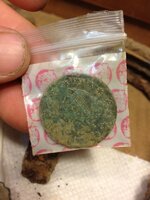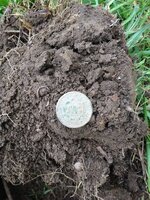my2hands
Jr. Member


Needed a little advice on this 1833 large cent. Found on a 19th century hillside farm. The dirt is solidly on the coin and wont come off. Ive used warm water and a toothpick carefully but not making great progress. The detail on this coin seems very good for an 1833. Does anyone think it would be worth getting it graded? If so what would it bring round about? The pics are of the same coin at different times.




